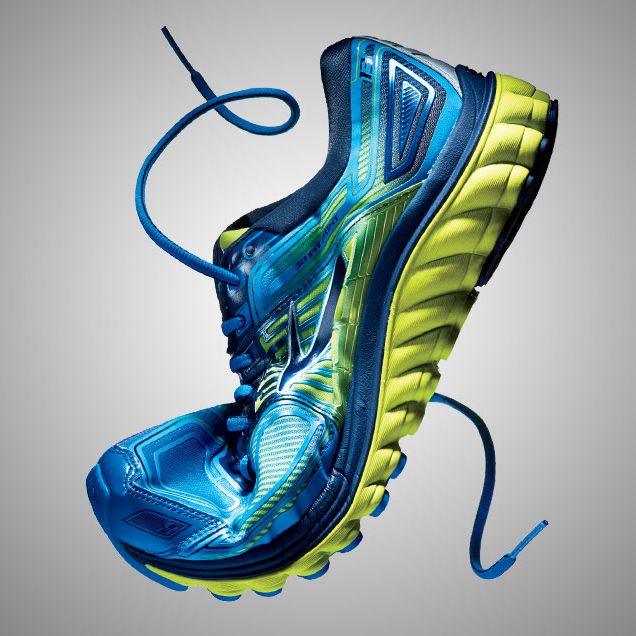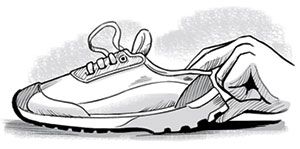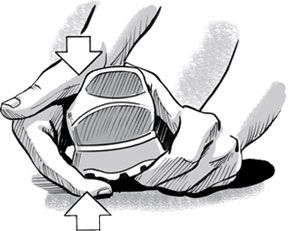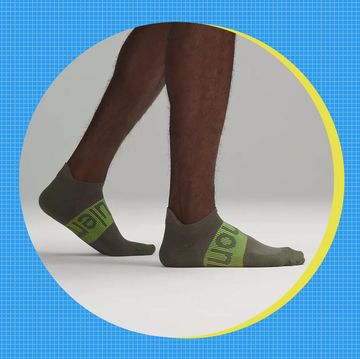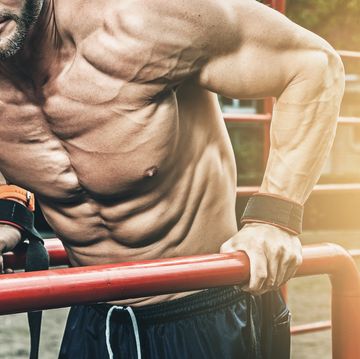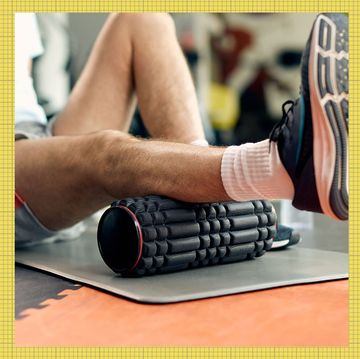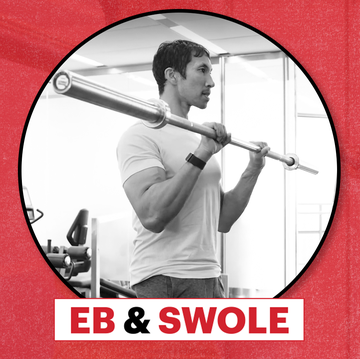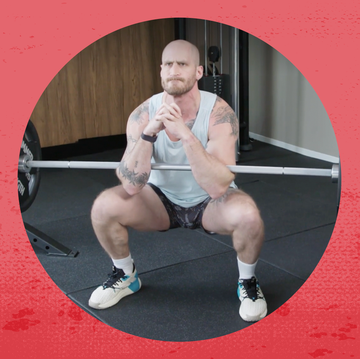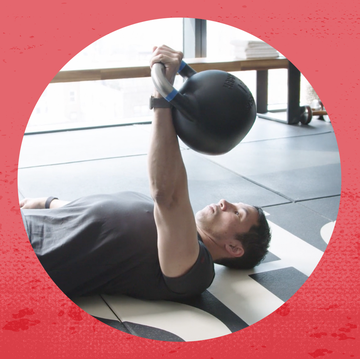They look sharp. Check. They’re on sale. Check. The sexy store employee says they make your calf muscles pop. Double check.
But before you swipe your credit card, make sure those new crosstraining sneakers do more than swaddle your hounded dogs.
Your shoes play a big role in protecting your pelvis and hips, says Lori Thomsen, M.P.T., a physical therapist in Lincoln, Nebraska. Thomsen warns that your muscles, ligaments, and tendons can quickly become overstressed if they’re not given proper support.
That leaves you more susceptible to injury during a weight lifting session or a road run—and also less competitive in your sport. So no matter how awesome the clerk says the shoes are, stop and perform our three-point inspection. If those sneakers fail the tests below, leave ‘em in the store.
(If you're looking for a new running kicks, check out The Best Running Sneakers For Men.)
1. Push In the Heel
When you press the back, it should be sturdy and have very little give. That rigidity helps reduce motion that can tug on ligaments and tendons.
2. Bend the Shoe
Flex in the middle indicates poor arch support. Arch support maximizes your glutes’ pushing power, and flex in the toe box mimics natural foot movement.
(Use your new workout sneakers during THE 21-DAY METASHRED—an At-Home Body-Shredding Program That Strips Away Fat and Reveals Lean, Hard Muscle.)
3. Compress the Sole
The shoe’s heel cushion should be firm, especially along the outer edge. Solid soles keep you from overworking your ankles and feet and risking injury.
